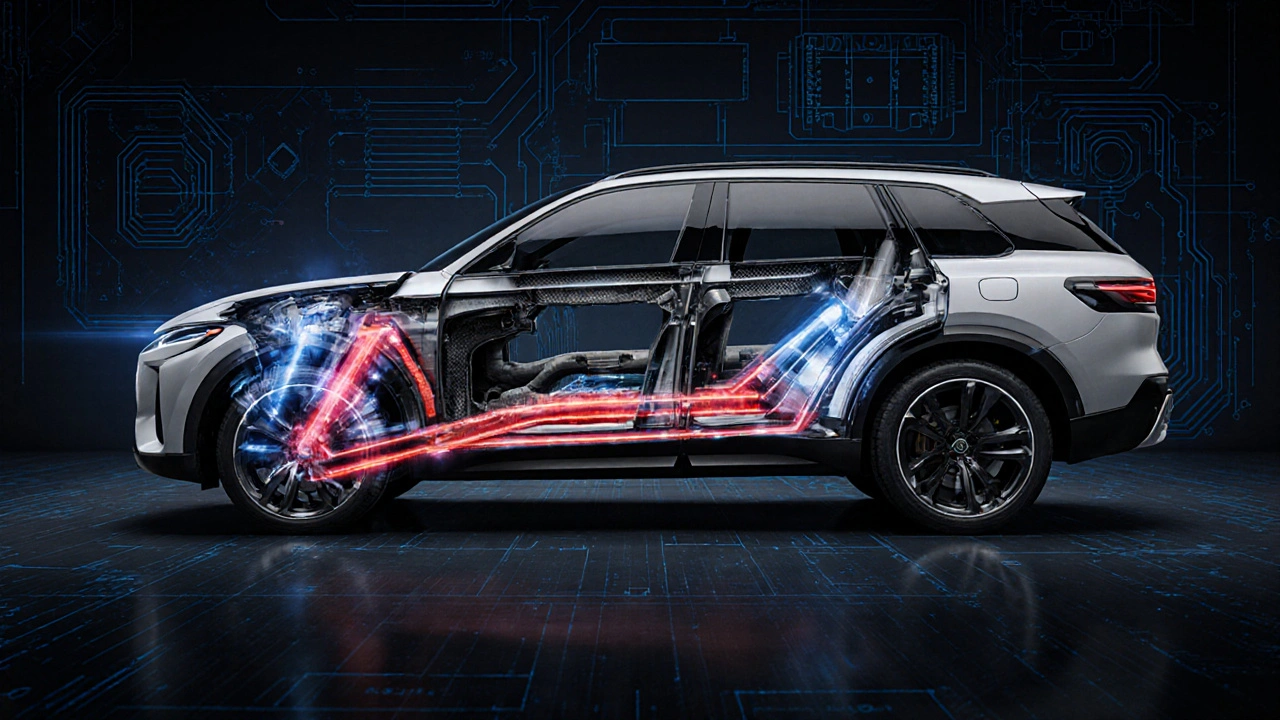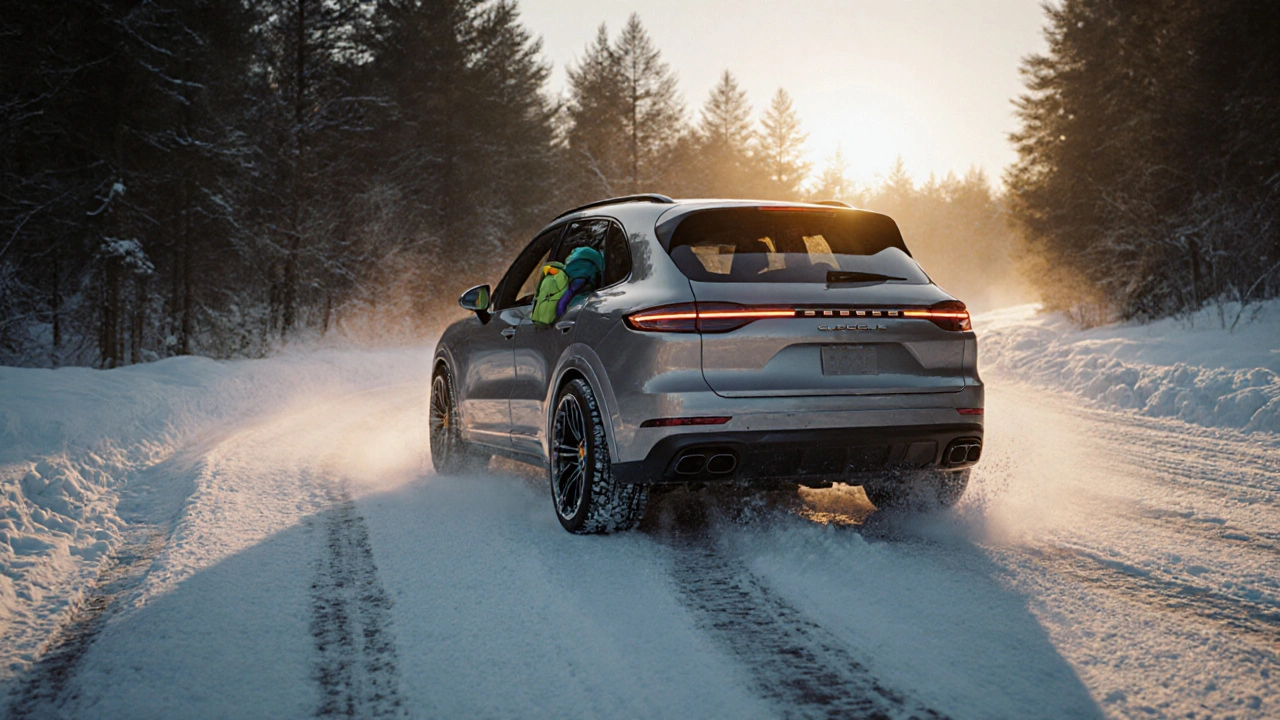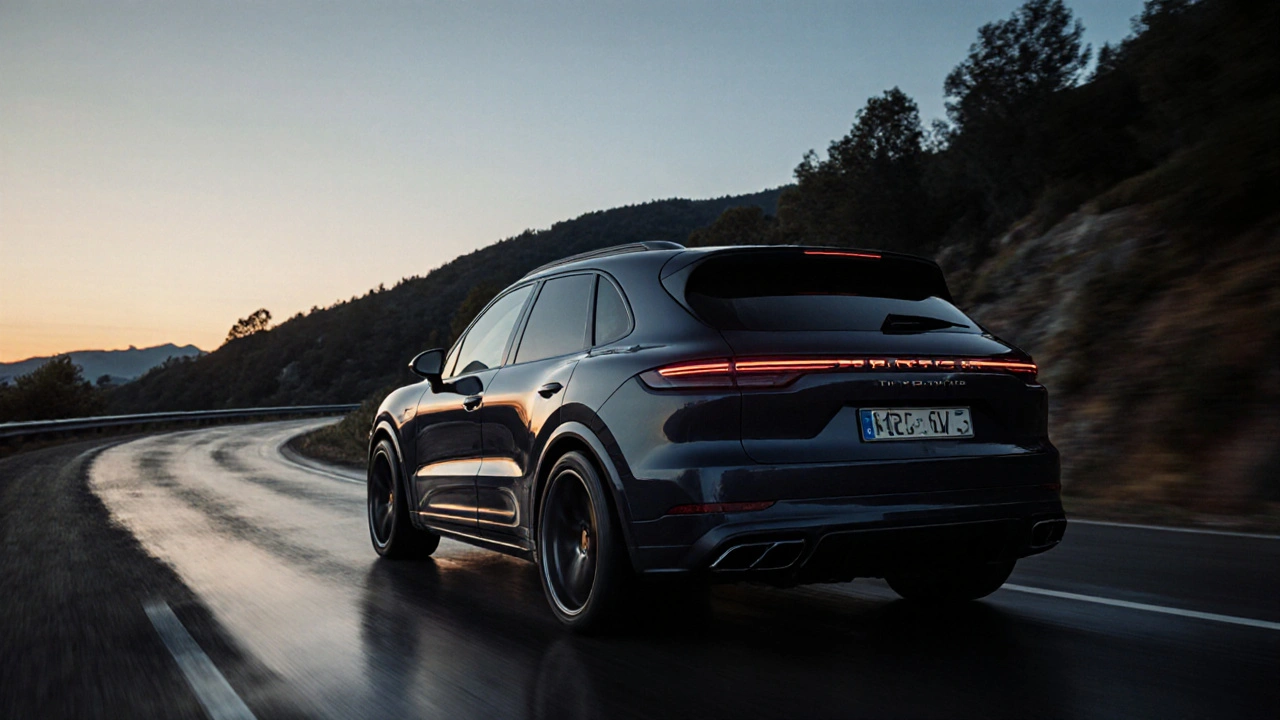Why performance SUVs are no longer just about space
Five years ago, if you wanted a fast SUV, you picked a Range Rover Sport and hoped the engine note was loud enough to make up for the body roll. Today, you can get a 600-horsepower SUV that corners like a sports car and stops on a dime. The old idea that big vehicles have to be slow and sloppy? Gone. Performance SUVs now blend muscle, precision, and real-world usability in ways that surprise even car enthusiasts.
Take the Alpine A110-a lightweight sports car with 300 hp. Now imagine that same agility in a vehicle that seats five, carries groceries, and still has ground clearance for snow. That’s what modern performance SUVs deliver. They’re not just fast in a straight line; they’re engineered to hug the road, respond instantly, and feel connected despite their size.
What makes a performance SUV different from a regular one
Not every SUV with a sporty name is actually fast. Some just have black wheels and a spoiler. True performance SUVs have upgrades that go deeper than looks. They include:
- High-output engines-usually twin-turbo V6 or V8, sometimes hybrid-assisted
- Adaptive air or coilover suspensions that lower the ride height at speed
- Performance-tuned all-wheel drive systems with torque vectoring
- Bigger brakes with multi-piston calipers and high-temp pads
- Stiffer chassis and reinforced subframes to reduce flex
- Wider tires with sticky compounds (often 275mm or wider)
For example, the Porsche Cayenne Turbo GT doesn’t just have a 631-hp engine. It also has rear-axle steering, active anti-roll bars, and a track-tuned suspension that drops the ride height by 15mm compared to the standard Cayenne. That’s not a trim level-it’s a complete re-engineering.
How these SUVs handle corners without rolling over
Big vehicles have a high center of gravity. That means they’re more likely to tip or lean in turns. Performance SUVs fight that with tech you won’t find in family models.
Active anti-roll bars are key. Instead of just being stiff or soft, they use electric motors to apply opposing force in real time. When you turn left, the right side of the bar tightens to push the body down, keeping it flat. It’s like having a second set of springs that only work when needed.
Then there’s rear-wheel steering. The Porsche Cayenne Turbo GT and BMW X5 M60i both use it. At low speeds, the rear wheels turn slightly opposite the fronts to shrink the turning circle. At high speeds, they turn the same way to make lane changes feel smoother and more stable. The result? A 2.2-ton SUV that feels like it’s on rails.
And don’t forget torque vectoring. Unlike regular AWD that sends power front or back, performance systems can send extra torque to the outer rear wheel during a turn. That pulls the SUV into the corner instead of letting it push wide. It’s the same tech used in race cars-just scaled for the road.

Real-world performance numbers that matter
Spec sheets can be misleading. A 0-60 mph time of 3.8 seconds sounds great, but what about braking from 70 mph? Or lateral grip on a skidpad? Here’s what the top performers actually do:
| Model | 0-60 mph | Braking (70-0 mph) | Lateral G | Weight |
|---|---|---|---|---|
| Alpine A110 SUV (concept) | 3.6 sec | 149 ft | 1.02g | 3,950 lbs |
| Porsche Cayenne Turbo GT | 3.1 sec | 142 ft | 1.05g | 4,850 lbs |
| BMW X5 M60i | 3.8 sec | 151 ft | 0.98g | 5,100 lbs |
| Mercedes-AMG GLC 63 | 3.7 sec | 147 ft | 0.96g | 4,700 lbs |
| Toyota GR SUV (2025) | 5.2 sec | 168 ft | 0.88g | 4,900 lbs |
Notice how the Cayenne Turbo GT, despite weighing over a ton more than a sports car, matches its cornering grip. That’s engineering. The Toyota GR SUV? It’s not a track monster-it’s a rugged, off-road-capable performance SUV. It trades outright speed for durability, which is a different kind of performance.
Who actually benefits from a performance SUV
These aren’t just toys for adrenaline junkies. People who drive them daily have real reasons:
- Parents who need to haul kids but hate slow, floaty cars
- Drivers in snowy regions who want grip and control, not just AWD
- People who commute long distances and want a car that stays composed on highways
- Enthusiasts who want one vehicle that does everything-weekend track days, grocery runs, winter road trips
I know a teacher in Bath who drives a Porsche Cayenne Turbo. She takes her two kids to school every morning, drops them off, then drives 40 miles to her weekend track days at Snetterton. She says the SUV’s stability at 100 mph on the M4 is better than her old 911. And the rear seats are easier to clean than leather upholstery.
That’s the shift. Performance SUVs aren’t about replacing sports cars. They’re about giving you the best of both worlds: the utility of an SUV with the dynamics of a sports sedan.

What you lose with performance SUVs
There’s no free lunch. These vehicles come with trade-offs:
- Price: You’re looking at $100,000+ for the top models. Even the entry-level BMW X3 M starts at $72,000.
- Fuel economy: Even hybrids like the BMW X5 xDrive50e only manage 20-22 mpg combined. The Cayenne Turbo GT? Around 15 mpg.
- Weight: More power means more cooling, bigger brakes, reinforced frames. That adds hundreds of pounds.
- Comfort: Track-tuned suspensions can be harsh on rough roads. Some models have a "Sport" mode that makes your spine ache on potholes.
- Insurance: Premiums can be 50-100% higher than a regular SUV.
It’s not about being fast. It’s about being fast and still functional. If you don’t use the performance, you’re paying for it as a status symbol. If you do use it-on winding roads, in rain, on backcountry routes-it becomes an asset.
What’s next for performance SUVs
Electric power is changing the game. Tesla Model X Plaid hits 0-60 in 2.5 seconds. Rivian R1S can do it in 3.0 seconds. But electric SUVs have a new problem: weight. The batteries add over 1,000 pounds. That’s why companies are now focusing on torque control and regenerative braking to make EV SUVs feel agile.
Toyota’s upcoming GR SUV isn’t electric. It’s a gas-powered, body-on-frame beast with a 3.3L twin-turbo V6 and a 10-speed automatic. It’s a direct response to the feeling that many performance SUVs have become too soft, too tech-heavy. Toyota’s version is raw, loud, and meant for drivers who want to feel every bump and gear shift.
The future isn’t just about more power. It’s about balance. More control. Less weight. More connection. The best performance SUVs will be the ones that remember they’re still SUVs-not sports cars with extra seats.
Final thoughts: Is a performance SUV right for you?
If you love driving and need space, yes. If you’re just buying it because it looks cool, maybe not. Performance SUVs aren’t about showing off. They’re about control-control over speed, control over corners, control over the road.
Test drive one on a twisty B-road. Not the highway. Not the parking lot. A real road with blind crests, tight corners, and uneven surfaces. See how it feels when you push it. If your heart races and your hands stay relaxed, you’ve found something rare: a big car that drives small.
Are performance SUVs worth the extra cost?
They’re only worth it if you use their performance regularly. If you drive on winding roads, in poor weather, or just enjoy a car that responds precisely, the extra cost buys you safety, control, and confidence. If you mostly drive on highways and never push the limits, you’re paying for power you don’t use. The savings from a regular SUV could go toward better tires, winter gear, or even a weekend track day.
Do performance SUVs handle snow better than regular SUVs?
Yes, but not because they’re faster. Their advanced all-wheel-drive systems, torque vectoring, and adaptive suspensions give them better traction and stability in slippery conditions. The Porsche Cayenne Turbo GT, for example, can adjust its torque split in milliseconds. That means less wheel spin and more predictable steering in snow. But you still need winter tires. Performance tech helps, but it doesn’t replace good rubber.
Which performance SUV has the best ride comfort?
The Mercedes-AMG GLC 63 strikes the best balance. It has a ride mode that softens the suspension without losing control. The BMW X5 M60i is also good, especially with its adaptive dampers set to Comfort. The Porsche Cayenne Turbo GT is the sharpest-great on track, firm on potholes. If comfort matters more than grip, avoid the track-focused models.
Are electric performance SUVs faster than gas ones?
In straight-line acceleration, yes. The Tesla Model X Plaid hits 60 mph in 2.5 seconds-faster than any gas SUV. But electric SUVs often feel heavier in corners because of their battery weight. Gas-powered models like the Cayenne Turbo GT still offer better balance and driver feedback. Speed isn’t everything-how the car feels matters more.
Can you daily drive a performance SUV?
Absolutely. Many owners do. The key is choosing a model with adjustable settings. The BMW X5 M60i and Mercedes-AMG GLC 63 have Comfort modes that make them smooth on commutes. Even the Porsche Cayenne Turbo GT can be driven gently. Fuel economy is the real challenge-not comfort. If you’re okay with spending more on gas, it’s a practical daily driver with thrilling moments.


Comments
Glenn Celaya
bro the cayenne turbo gt is just a glorified suburban taxi with a spoiler and a price tag that could buy a decent house in texas
November 4, 2025 at 06:47
Jen Becker
i hate these cars. they're just status symbols for people who can't afford a 911.
November 4, 2025 at 20:11
Wilda Mcgee
actually, i think this is kind of beautiful. imagine being a parent who needs space but still wants to feel alive behind the wheel. the tech that lets a 5000lb SUV hug a twisty road? that's engineering poetry. not every performance car has to be a lightweight track toy. sometimes, the magic is in making something big feel small.
November 5, 2025 at 23:56
Chris Atkins
the toyota gr suv sounds like a breath of fresh air honestly no fancy screens no overengineered suspension just raw power and a manual transmission if you want it
November 7, 2025 at 15:22
Samuel Bennett
you guys keep talking about torque vectoring like its some revolutionary tech but its been in race cars since the 90s and now its just a marketing buzzword for overpriced suvs. also the word 'agility' is misused here 90% of these things weigh more than a dump truck
November 7, 2025 at 21:10
Rob D
americans think they need a 600hp suv to drive on snow. in russia we just use studded tires and a lada. you people buy cars to compensate for something. also why is everyone ignoring the mercedes glc 63? that thing is pure american overkill
November 9, 2025 at 03:15
Madeline VanHorn
the teacher in bath? please. she's not driving for performance. she's driving because she thinks it makes her look like she's in a car commercial. real enthusiasts don't need five seats and a backseat snack organizer.
November 10, 2025 at 07:47
Ryan Toporowski
i took my x5 m60i on a mountain road last weekend 🤩 the comfort mode was so smooth on the way up then i switched to sport and it turned into a beast on the way down 😎 honestly if you can afford one and use it right it's life changing. not a toy. a tool. 🚗💨
November 11, 2025 at 07:35